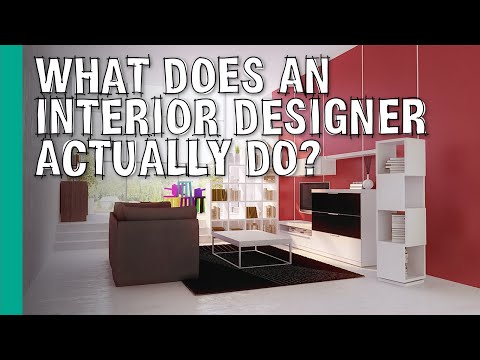Interior Designer Job Description & Salary: Transform Spaces, Earn Rewards!

Interior Designer Job Description Template
Interior Designer Job Description An interior designer is a professional who is responsible for creating functional and aesthetically pleasing interior spaces. Their primary goal is to enhance the quality of life and well-being of individuals by transforming ordinary spaces into extraordinary ones. Interior designers work closely with clients to understand their preferences, needs, and budget constraints. They utilize their creative and technical skills to develop design concepts, which include selecting color schemes, materials, furniture, lighting fixtures, and other decorative elements. They create detailed floor plans, 3D renderings, and mood boards to present their ideas to clients. One important aspect of an interior designer’s job is to ensure that the design meets all safety and regulatory requirements. They must have a thorough understanding of building codes, fire safety regulations, and accessibility guidelines. They also need to consider factors such as lighting, acoustics, and ergonomics to create spaces that are not only visually appealing but also functional and comfortable. Another crucial aspect of being an interior designer is staying updated with the latest design trends, materials, and technologies. They need to constantly research and explore new ideas to provide innovative and unique solutions to their clients. Effective communication and collaboration skills are also essential, as they often work alongside architects, contractors, and other professionals to bring their designs to life. In summary, an interior designer is a creative professional who transforms spaces into beautiful and functional environments. They combine their artistic vision with technical knowledge to create harmonious and unique interiors that reflect the client’s personality and style.Interior Designer Responsibilities
Interior Designer Requirements
How Much Does A Interior Designer Make?
Interior Designer Salary
| Experience Level | Average Salary (per year) |
|---|---|
| Entry Level | $40,000 – $50,000 |
| Mid-Level | $50,000 – $70,000 |
| Senior Level | $70,000 – $100,000 |
An interior designer’s salary can vary depending on their level of experience. Entry-level interior designers typically earn between $40,000 and $50,000 per year. As they gain more experience and advance to mid-level positions, their salary range increases to $50,000 – $70,000. Senior-level interior designers with extensive experience and expertise can earn between $70,000 and $100,000 per year. It’s important to note that these salary ranges can also be influenced by factors such as location, company size, and the designer’s portfolio and reputation.
Interior Designer Salaries by Country
Top Paying Countries for Interior Designer
| Country | Average Annual Salary (USD) |
|---|---|
| Switzerland | $88,680 |
| Australia | $65,470 |
| United States | $59,120 |
| United Kingdom | $49,910 |
| Canada | $46,540 |
An interior designer’s salary can vary greatly depending on the country they work in. Switzerland is known to have the highest average annual salary for interior designers, with an average of $88,680. Australia follows closely behind with an average salary of $65,470. In the United States, interior designers earn an average of $59,120 per year, while in the United Kingdom, the average salary is $49,910. Canada rounds up the top five paying countries with an average salary of $46,540. Keep in mind that these figures are averages and can vary based on factors such as experience, education, and location within each country.
A video on the topic Interior Designer
Video Source : ARTiculationsInterview Questions for Interior Designer
1. Can you tell me about your background and experience as an interior designer?
As an interior designer, I have a Bachelor’s degree in Interior Design and have been working in the field for the past 5 years. I have experience working on both residential and commercial projects, collaborating with clients to create aesthetically pleasing and functional spaces.
2. How do you approach a new interior design project?
When starting a new project, I begin by meeting with the client to understand their needs, preferences, and budget. Then, I conduct thorough research on the space and its potential limitations. Next, I develop concept ideas and create mood boards to present to the client before moving on to the design and implementation phases.
3. How do you stay updated with the latest trends and developments in interior design?
I believe it is essential to continuously educate myself about the latest trends and developments in the interior design industry. I regularly attend design conferences, workshops, and trade shows. Additionally, I follow influential design blogs and magazines to stay informed about current trends and innovative design techniques.
4. Can you describe a project where you faced a design challenge and how you overcame it?
During a project for a small apartment, I encountered a challenge of limited space. To overcome this, I focused on optimizing the available space by utilizing multifunctional furniture, implementing clever storage solutions, and utilizing light colors to create an illusion of spaciousness. By carefully planning and utilizing every inch of space, I was able to create a functional and visually appealing design.
5. How do you ensure that your design aligns with the client’s vision?
To ensure alignment with the client’s vision, I prioritize effective communication and active listening. I make sure to thoroughly understand the client’s preferences, lifestyle, and desired aesthetics. Throughout the design process, I frequently consult with the client, present design options, and incorporate their feedback to ensure their vision is realized.
6. What software tools do you use for your design work?
I am proficient in using various design software tools such as AutoCAD, SketchUp, and Adobe Creative Suite (including Photoshop and Illustrator). These tools allow me to create detailed floor plans, 3D visualizations, and present design concepts to clients effectively.
7. How do you handle working within a budget constraint?
Working within a budget constraint is a crucial aspect of interior design. I prioritize understanding the client’s budget from the beginning and make sure to present design options and material choices that align with their financial limitations. I also have experience in sourcing cost-effective alternatives without compromising on quality and design aesthetics.
8. Can you describe your process of selecting materials and finishes for a project?
When selecting materials and finishes for a project, I consider factors such as durability, functionality, aesthetics, and budget. I conduct thorough research on different materials, visit showrooms, and consult with suppliers to gather information and samples. I then present the options to the client, explaining the pros and cons of each, and work collaboratively to finalize the selections.
9. How do you handle conflicts or disagreements with clients during a project?
Open and honest communication is essential when conflicts or disagreements arise with clients. I listen to their concerns, provide explanations, and offer alternative solutions that address their needs and preferences while staying within project constraints. I believe in finding a middle ground through effective negotiation and maintaining professionalism throughout the process.
10. Can you share examples of your previous work or client testimonials?
Yes, I have a portfolio showcasing my previous work, which includes residential and commercial projects. Additionally, I can provide client testimonials upon request to demonstrate the satisfaction and positive feedback received from previous clients.






